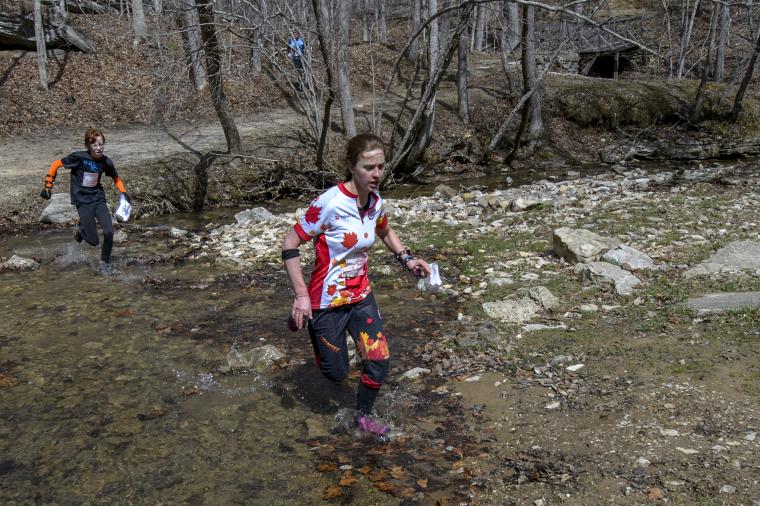
 http://orienteeringusa.org/
http://orienteeringusa.org/
Orienteering USA (OUSA) is the national governing body for the sport of orienteering, which is a navigation race—often held in unfamiliar terrain—using a map and compass. Orienteering USA's mission is to increase participation in the sport, teach map reading and navigation skills, promote enjoyment of and respect for the environment and establish world-class competitive excellence within its national team programs. OUSA represents over 60 clubs as well as tens of thousands of orienteers across the country. On the national level, OUSA supports a number of teams, including the U.S. Senior Foot Orienteering Team, U.S. Junior Foot Orienteering Team, U.S. Ski Orienteering Team, U.S. Mountain Bike Orienteering Team, U.S. Trail Orienteering Team, U.S. Deaf Orienteering Team and U.S. University Foot Orienteering Team.
Sports Destination Management: Orienteering is an interesting niche sport. What is the participation like?
Glen Schorr: Our participation is going up. The sport was really at its highest point in the 1970s and 80s; however, since 2009, our participation figures, which are measured by entry fees in races, tell us we’re going up by about five to eight percent per year.

Schorr: About a year ago, Sports Illustrated ran an article about the ‘second running revolution.’ There has been a lot of interest in trail running, adventure running, obstacle races – all things that were related to running in nature. Then at the same time, you also started seeing the Diva races, the Color Runs – all the events that were benefits for causes. As people have come into running, some have come into orienteering. As we like to say, a rising tide lifts all boats.
SDM: Is geocaching a part of that revolution?
Schorr: Geocaching is like a scavenger hunt in which you’re using your cell phone. But it has gotten people outside and that’s important. Orienteering is the purest form of racing – all you get is a map and a compass. It’s a cross between an amazing 5K run and a day in the woods. We teach that navigational element that people might not get otherwise.
SDM: Orienteering didn’t make the cut for consideration by the IOC for the summer Olympics in Tokyo.
Schorr: We were honored to make the initial list and our international federation will continue to push for inclusion in the future.
SDM: How many events does OUSA put on?
Schorr: We have about 65 clubs and they put on about 800 events per year. We sanction about 15 national events a year. For example, we have the U.S. championships that will draw 400 athletes who will compete in different distances: sprint, middle and long. That event will draw from between 35 and 38 states. In September of 2016, we expect the North American championships in New Hampshire to draw up to 800 athletes from all over the world. People will travel to get ranking points.
SDM: What is the entry point to orienteering? Do people tend to do it because other family members are involved? Are there clubs at schools for it or recreational programs people can join?
Schorr: It’s a little bit of all of the above. Middle schoolers and high schoolers often get involved through JROTC or Scouts, and I would say that’s where a majority of our participation starts out. Sometimes you’re just in an area with a strong orienteering community. Sometimes you come from a family that is really into orienteering. There are college programs, but you don’t see a lot of early  adoption at the college age, aside from having a strong orienteering program at military academies. We have people in their early 20s who live in cities who want to try it. We even have retirees who participate. It’s really for all ages, but everyone is a little bit outdoor-minded, and they tend to like having that challenge.
adoption at the college age, aside from having a strong orienteering program at military academies. We have people in their early 20s who live in cities who want to try it. We even have retirees who participate. It’s really for all ages, but everyone is a little bit outdoor-minded, and they tend to like having that challenge.
SDM: The website refers to orienteers are ‘the world’s smartest athletes.’ Is there a lot of decision-making is involved in orienteering?
Schorr: Yes. It’s a sport that really makes you think about what you’re doing. Anyone can do a 5K run and get exercise, but when they’re finished, they haven’t exercised their mind. In orienteering, you need to determine your plan of attack on the course and execute it without making any mistakes.
SDM: What are the different forms of orienteering?
Schorr: There is foot orienteering, which obviously is when you’re running through the woods on foot. Nine out of every 10 entries in orienteering is foot. Then there’s mountain bike orienteering. There’s also ski orienteering, which is done on the snow using cross-country skis.
SDM: Is there an adaptive form of orienteering?
Schorr: The adaptive form is called trail orienteering. The course has to be accessible so it stays totally on set of trails that are blacktop or macadam. A good venue might be a city park or college campus with a network of trails going all the way through.
SDM: What goes into site selection for courses?
Schorr: We look for several things. First, we need to have a local organizing committee in place, so we look for a strong orienteering club in the area. Second, we need to have an orienteering map made. Third, we want to partner with the local sports commission on the event.
When you’re looking for a place to hold the race, it isn’t really enough just to have a certain amount of acreage; you’re ideally looking for varied terrain: parks, forests and woods. We like a lot of different features that would make up what they call ‘white woods’ which means runnable woods. You need a course you’re able to work your way through, which is why traditionally in the Mid-Atlantic states, October to April is orienteering season. In the summer, the woods are just too overgrown. If we’re looking for courses for ski orienteering and mountain bike orienteering, we need an intricate trail network. No matter what you use, an orienteering map should look like a bowl of spaghetti.

Schorr: Yes, there actually is. For example, at the national level, we will microchip the top athletes, and there will be a big electronic map that people are watching. It’s an incredible graphic element that lets people know where the runners are. When you see a dot stray from the course, there is an audible gasp from the crowd.

